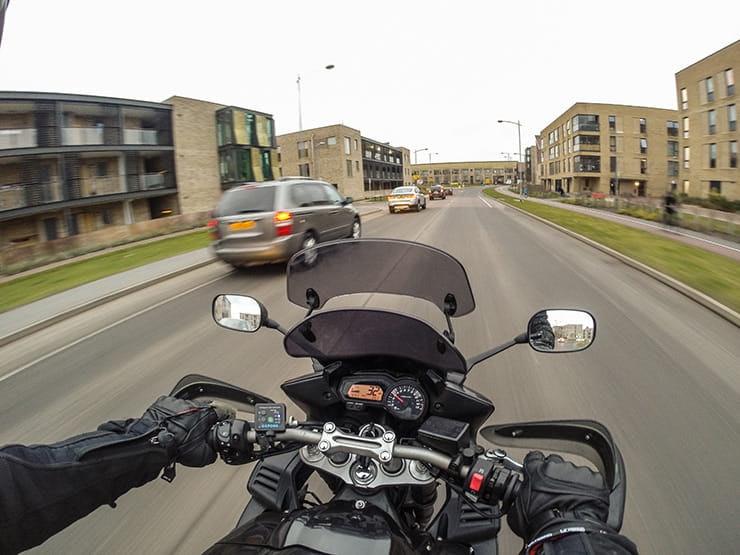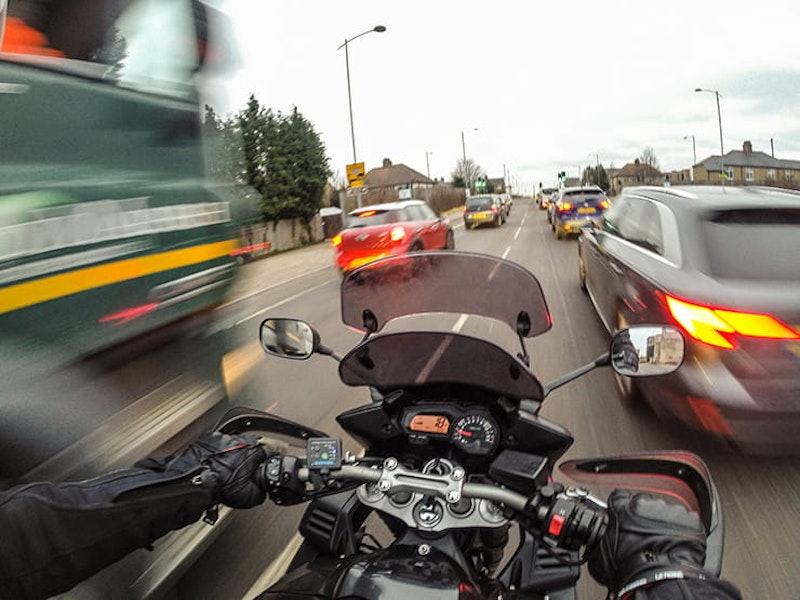If you’re going to overtake go down a gear for more revs – the bike will accelerate faster and feel more responsive
Crispin d’Albertanson is a Nurburgring coach, senior IAM observer and ex-endurance racer who now works with the well-respected Hopp Rider Training. You can book a course on road or track at www.hoppridertraining.co.uk or 07881 878989.
How can gear choice mess up your riding?
A surprising number of people ride in too high a gear all the time, which can cause all sorts of problems. You see them running into corners too quickly because there’s so little engine braking, and then they don’t have enough control because the bike reacts sluggishly to changed throttle inputs - at very low revs there’s almost no reaction to the throttle whatsoever.
And what happens then?
It means they often have to start braking mid-corner or end up coasting round rather than driving towards the exit as the corner opens out.
Filtering is another time you should be in a lower enough gear for the bike to react smartly if you throttle off and for there to be power if you need it suddenly
Overtaking must be slow too?
Yes, overtaking becomes a problem because the acceleration is just not there. Then the rider either has to crawl past, hoping nothing comes the other way, or change down as he’s overtaking, which is not what you should be concentrating on. What can also happen is that if you’re in too high a gear on a powerful bike, you accelerate slowly at first, then the power comes in and you rocket up to a much higher terminal velocity than you require. You end up travelling at a hell of a lick, but it’s still taken longer to get past, and then you have to slam the brakes on for the next hazard.
How do I choose the right gear?
For both corners and overtakes, the engine should be revving so there is a tractable spread of power available - enough to get you crisply round the corner or past the car without you running out of revs. This region is normally in the middle third of the rev range. So for a big twin such as an R1200GS, you’ll want to keep the revs between 3000 and 6000rpm. If you’re on a sports 600 that revs to 15,000 then you need to be somewhere between 5000 and 10,000rpm - probably nearer to 10,000 than 5000 because of the peaky power delivery of modern 600s.
Going up a gear while overtaking is probably not needed
So is it just a problem with under-revving the engine?
Not always. The other extreme I see a lot are the riders who have been on advanced training, who hold the bike in much too low a gear. They’ll be stuck in second and third on a country road even when the road’s opened up, with the engine revving near its redline. They do it so that when they get to the next bend they can just close the throttle and not have to brake. This stems from the myth that not showing a brake light is a sign of a smooth rider, when of course nothing can be further from the truth.
That sounds mechanically painful...
It is. And besides being uneconomical, this habit makes the bike more snatchy, which will have an adverse effect on chain life, sprockets, cush drives etc. But perhaps more importantly, it’s not a relaxed way to ride - it tires you out. Plus, if you end up in a corner in too low a gear it will make the bike harder to control - small changes in throttle will create unsettling amounts of weight transfer, giving a choppy feel that could ultimately make the bike feel unstable.
Any other gearbox mistakes?
A related bad habit is using the gearbox to slow the bike down before applying the brakes. I often see riders approach a roundabout, go down two gears and then grab the brake. The risk here is that by letting the clutch out as they change down at too high a speed, the back wheel could easily lock up and then they would have very little control. They could nip the clutch back in, but who has the presence of mind to do that? Of course what you should do is use the brake to slow down and then match the engine speed to the road speed using the gears.

